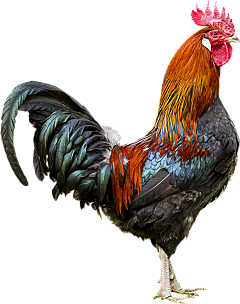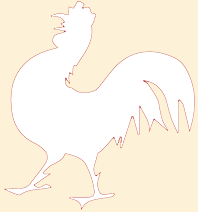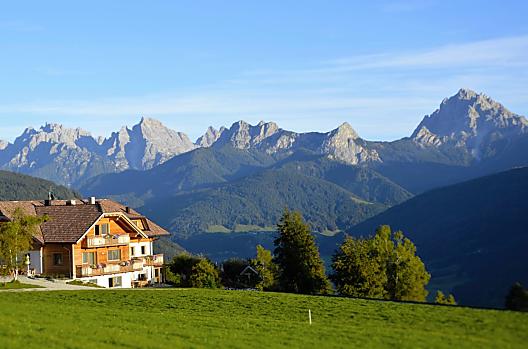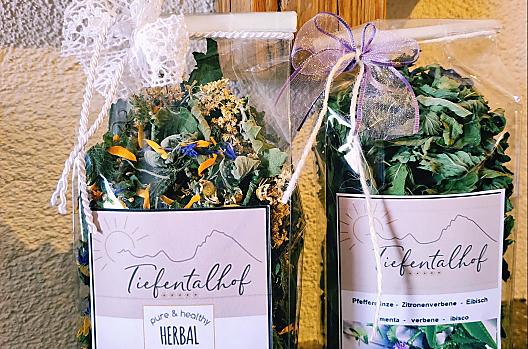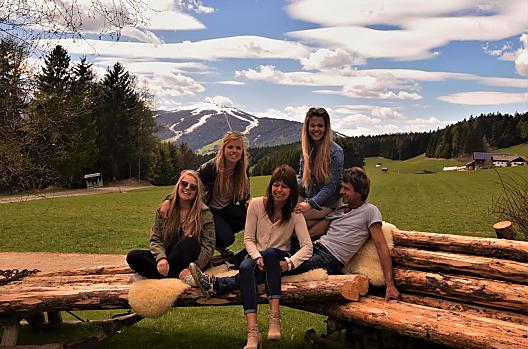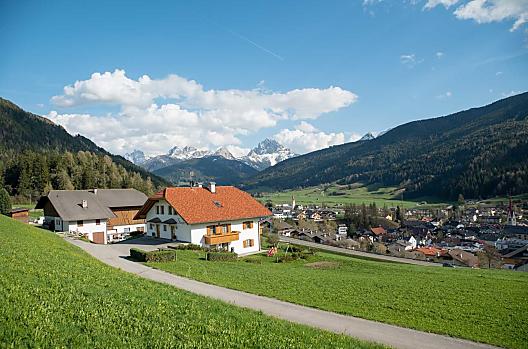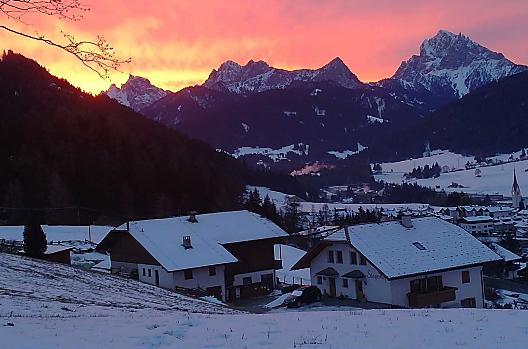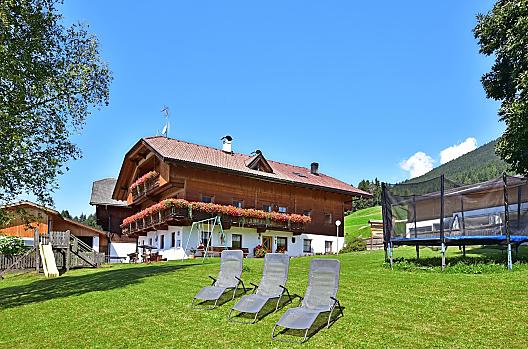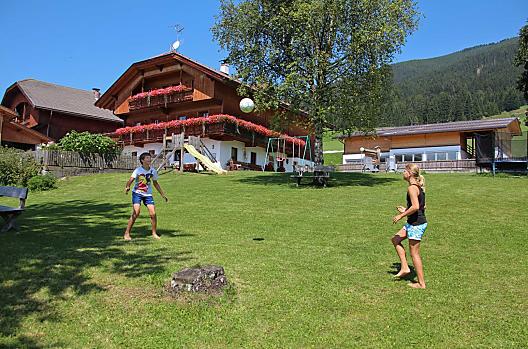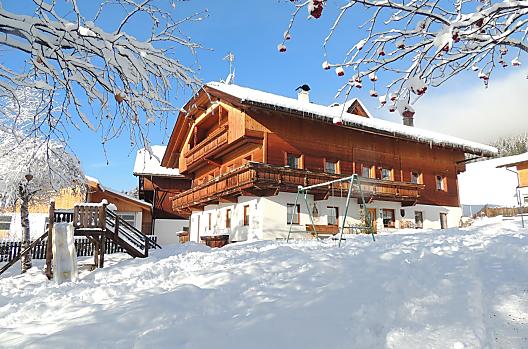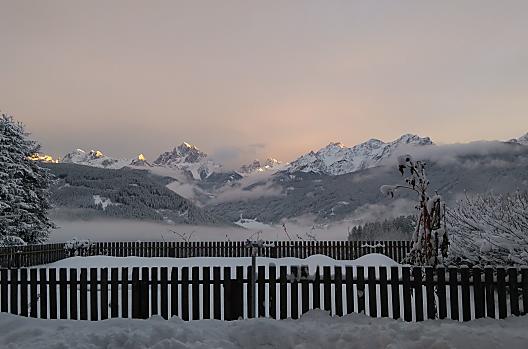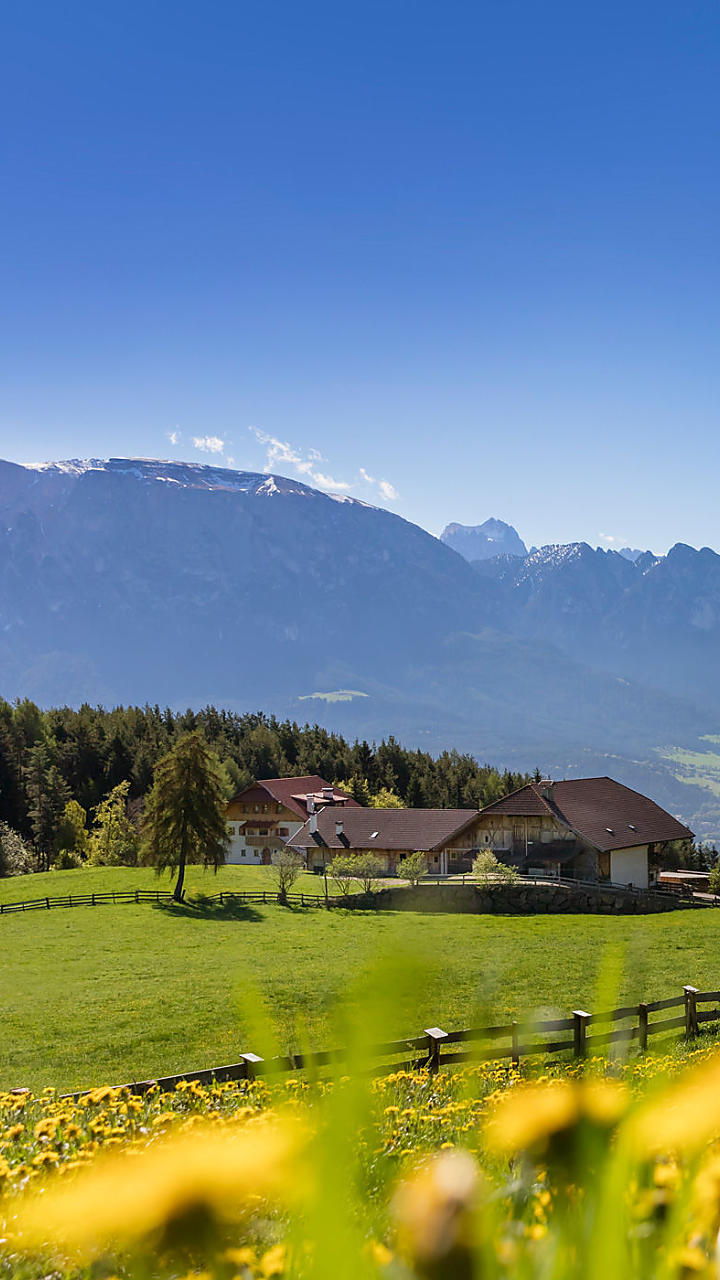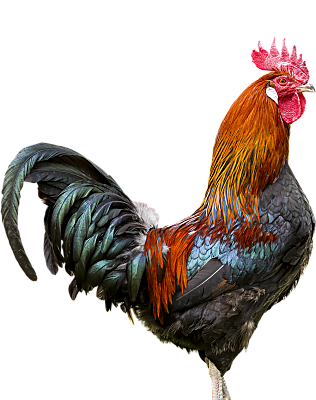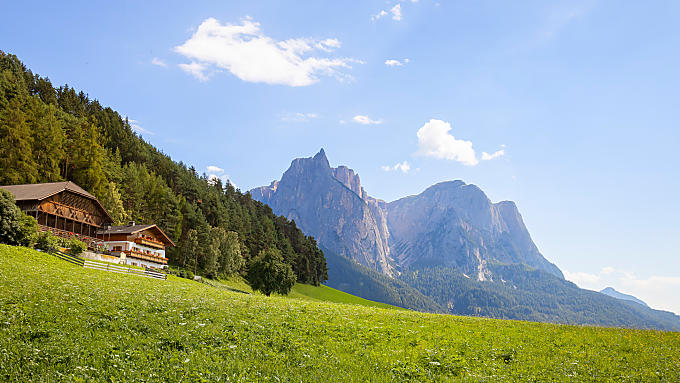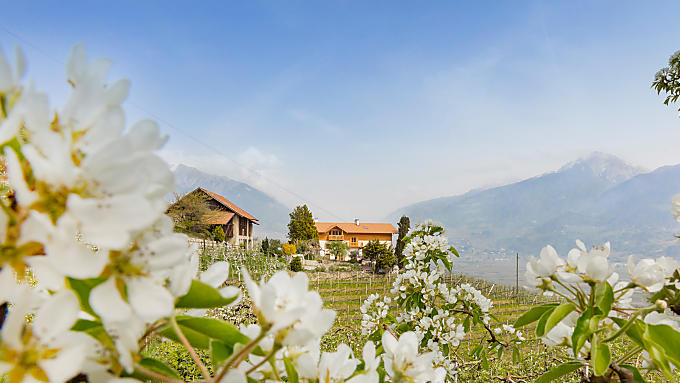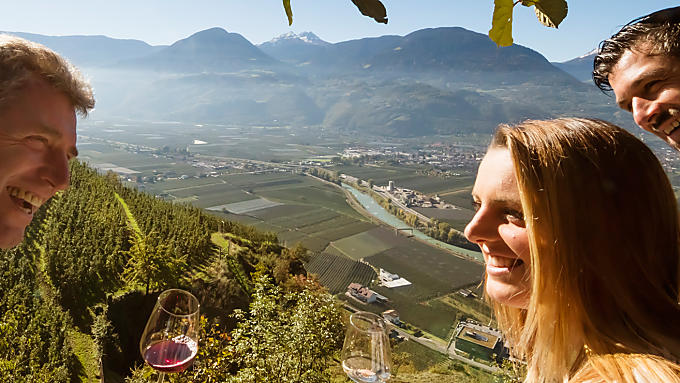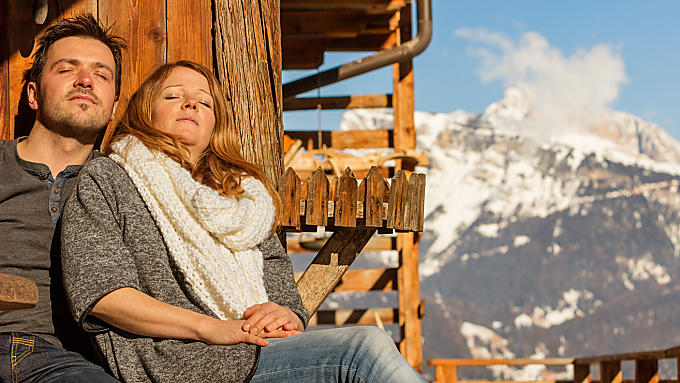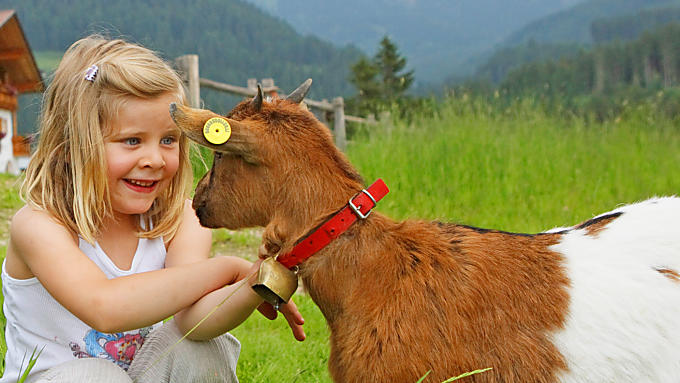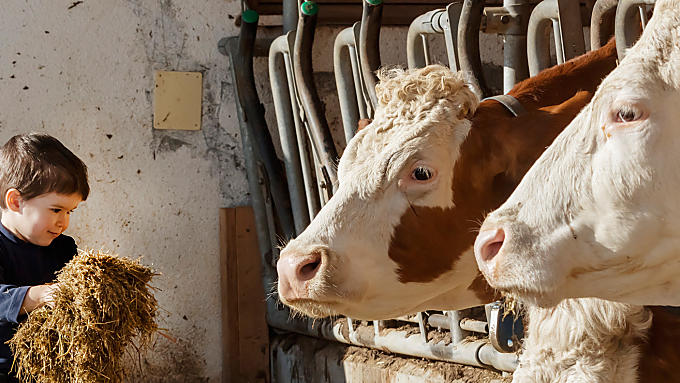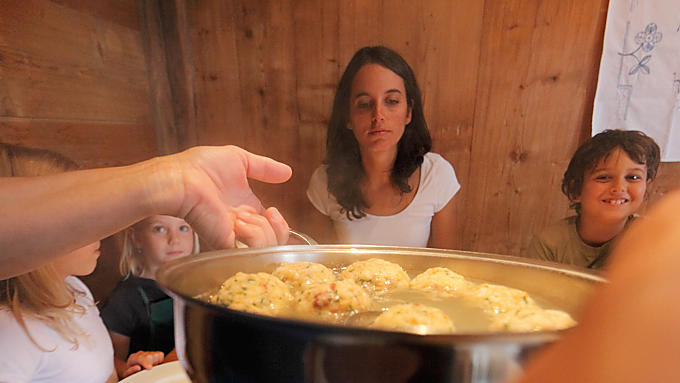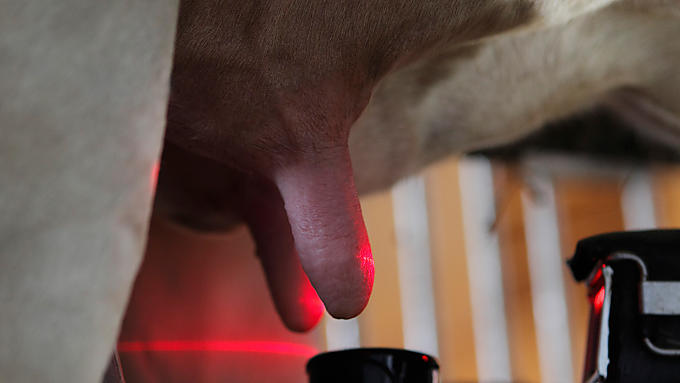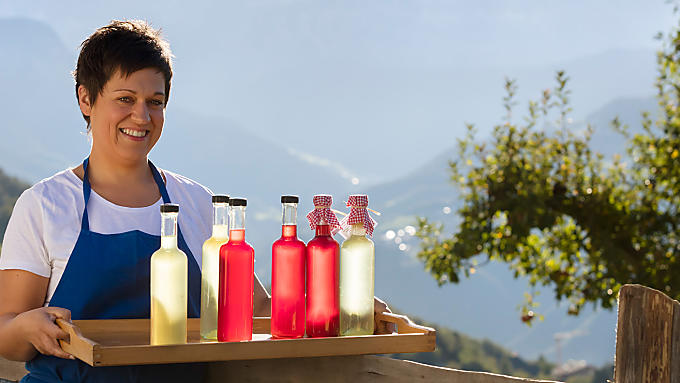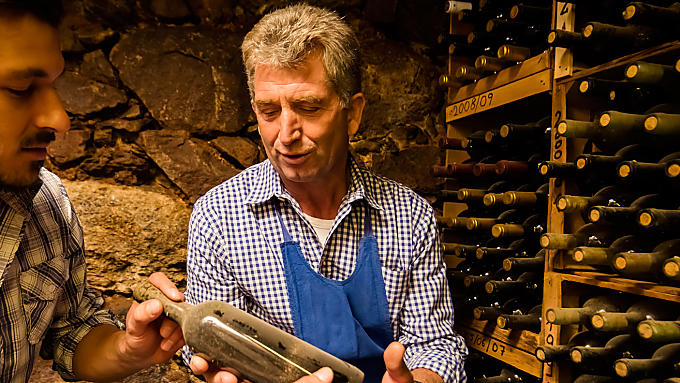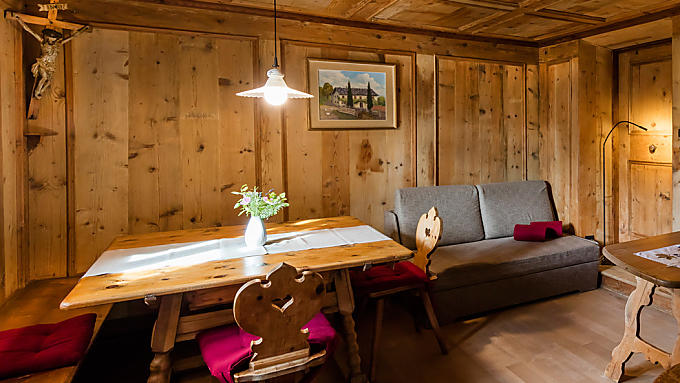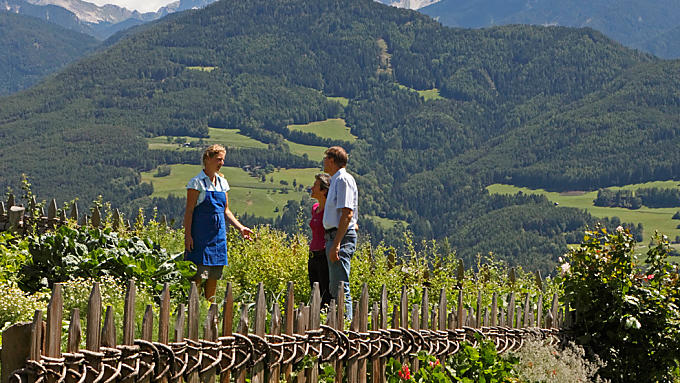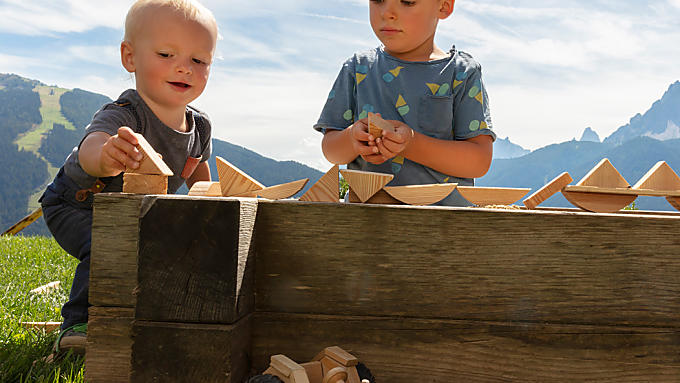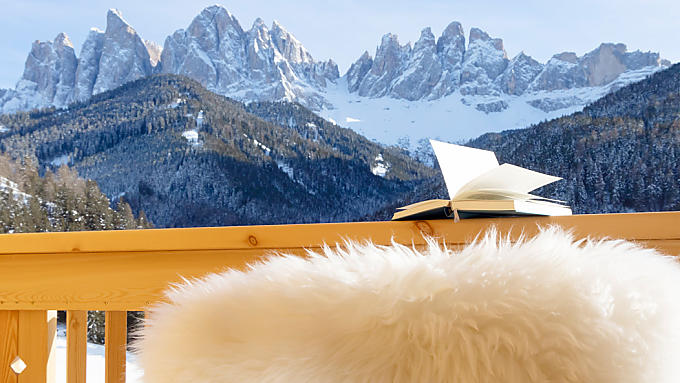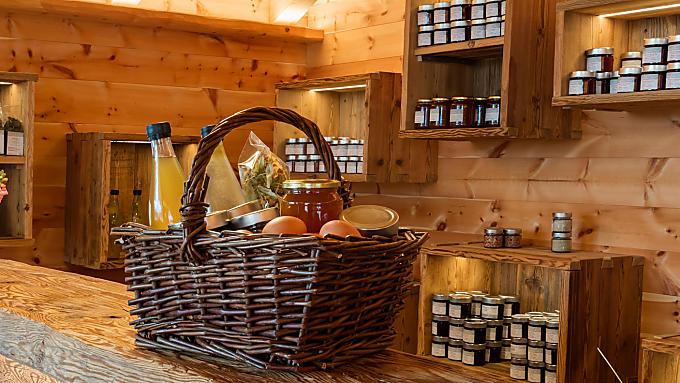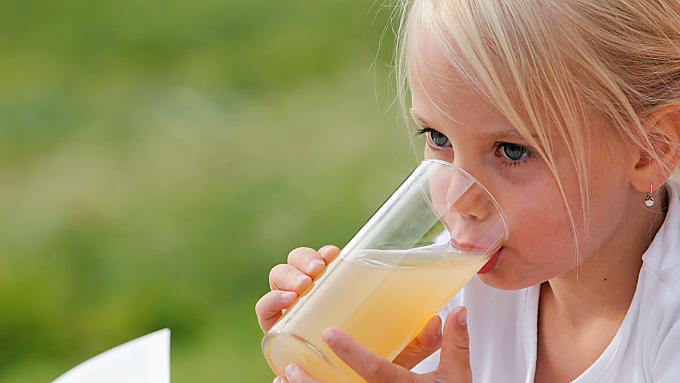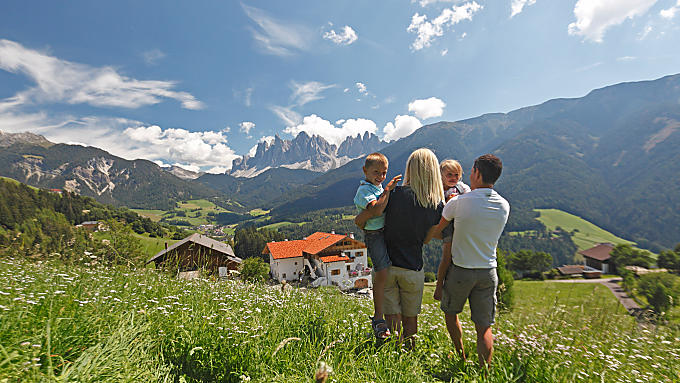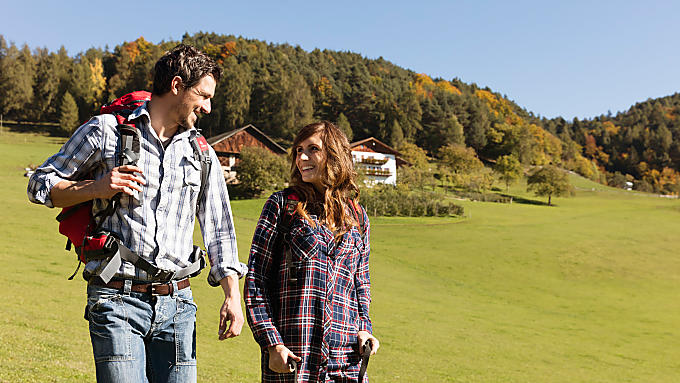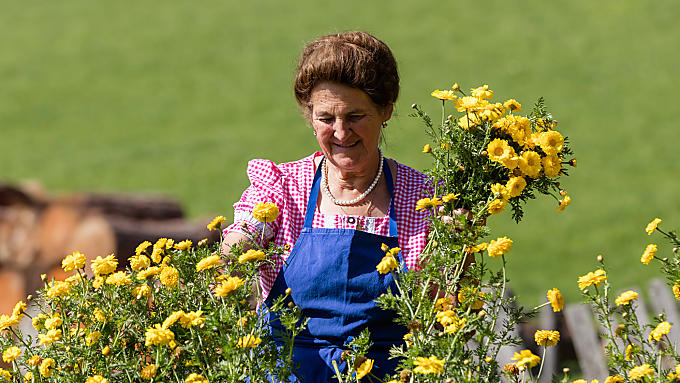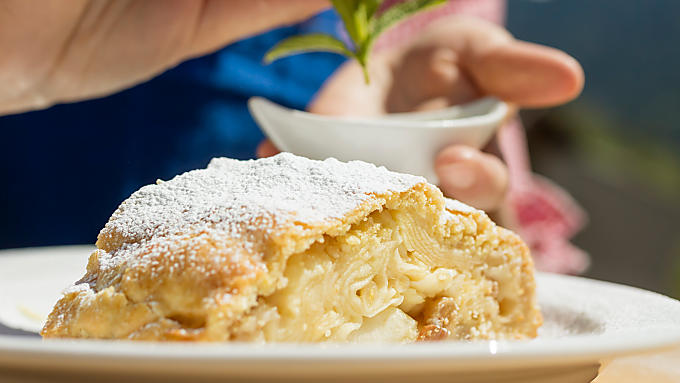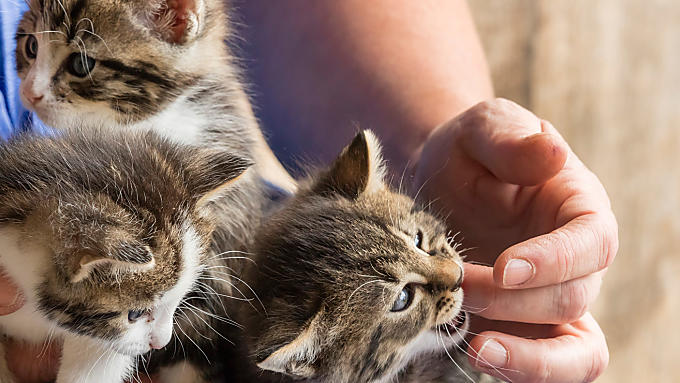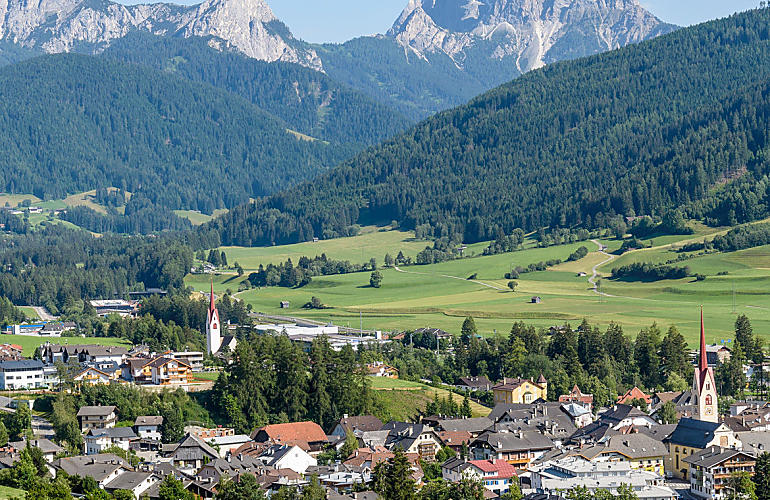
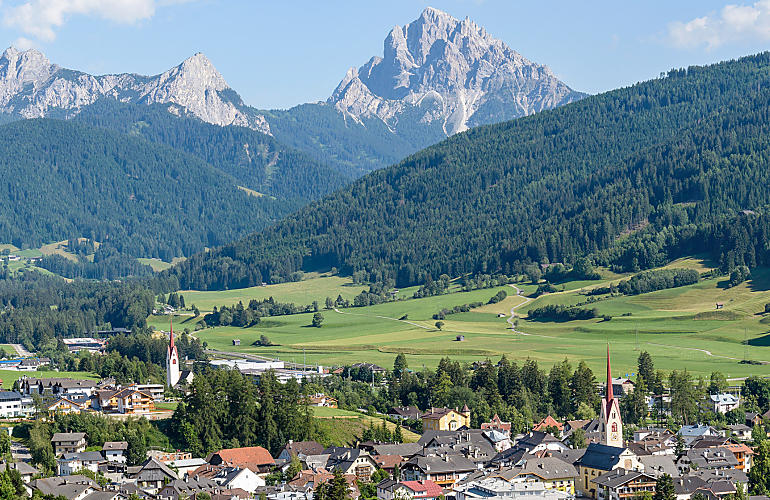
Relax, please!
Holiday location
Farm Holidays in Welsberg-Taisten
For all relaxation-seekers, a Farm Holiday in Welsberg-Taisten is just the thing.
The market community of Welsberg-Taisten lies at the point where the Gsieserbach stream flows in the Rienz river. Taisten sits on a hill looking over the start of Gsieser Tal valley, while Welsberg stretches from the valley basin a little up the slope. There are around 2,800 people living in Welsberg-Taisten in the two main villages of Welsberg and Taisten as well as the hamlets of Ried, Unterrain and Wiesen. This is a place of peace and quiet set in an idyllic and very sunny spot.
For all relaxation-seekers, a Farm Holiday in Welsberg-Taisten is just the thing.
The market community of Welsberg-Taisten lies at the point where the Gsieserbach stream flows in the Rienz river. Taisten sits on a hill looking over the start of Gsieser Tal valley, while Welsberg stretches from the valley basin a little up the slope. There are around 2,800 people living in Welsberg-Taisten in the two main villages of Welsberg and Taisten as well as the hamlets of Ried, Unterrain and Wiesen. This is a place of peace and quiet set in an idyllic and very sunny spot.
Poets and artists
The municipality has associations with a few famous personalities: Simon von Taisten, a representative of the late-Gothic period, and his Baroque colleague, Paul Troger – both famous for their church frescoes – were born here. Hugo von Hofmannsthal and Arthur Schnitzler came on holiday to Welsberg and Taisten to recharge their batteries and find inspiration.
A stop off on Taistner Alm pastures
There are plenty of walking paths all around the parish, from family walks to challenging mountain tours, for active summer holidaymakers in Welsberg-Taisten. The area also lies on the Pustertal valley cycle path connecting lots of municipalities in Pustertal with each other. The Taistner Alm pasture, also known as Taistner Vorderalm, may be found at an altitude of 2,015 metres at the foot of the Rudlhorn, the local mountain to Taisten. It is popular with guests and locals alike. The variety of plant species transforming the mountain meadows into a colourful carpet of flowers will delight everyone, not just experts in Alpine flora. This pasture, which features an inn serving food during the sledging season in winter too, is accessible from several sides. Three mountain peaks may be conquered from here by means of a longer tour: the Lutterkopf, Durrakopf and Rudlhorn. The area is good for snow shoe walking in winter or the slope down from the Taistner Alm may be used as a sledge run.
Welsberg Castle
This is the first things that anyone coming to Welsberg will see: the high keep of Schloss Welsperg castle. Schloss Welsperg is the most important monument in the municipality. Built by the Lords of Welsperg in the 12th century, it sits on a rock with a steep drop on three sides down to the Gsieser Bach stream. This is a so-called 'Kernberg' – the centre of a weir system in the Middle Ages. An educational trail leads from the village centre of Welsberg right to the castle entrance. You can do a circular castle walk in two hours. This walk also makes a welcome change from days skiing on Kronplatz or cross-country skiing on a Farm Holiday in Welsberg-Taisten. During the summer months, there are a number of exhibitions and concerts featuring a fantastic atmosphere on Schloss Welsperg, all easily reachable staying in a holiday flat or room.
Poets and artists
The municipality has associations with a few famous personalities: Simon von Taisten, a representative of the late-Gothic period, and his Baroque colleague, Paul Troger – both famous for their church frescoes – were born here. Hugo von Hofmannsthal and Arthur Schnitzler came on holiday to Welsberg and Taisten to recharge their batteries and find inspiration.
A stop off on Taistner Alm pastures
There are plenty of walking paths all around the parish, from family walks to challenging mountain tours, for active summer holidaymakers in Welsberg-Taisten. The area also lies on the Pustertal valley cycle path connecting lots of municipalities in Pustertal with each other. The Taistner Alm pasture, also known as Taistner Vorderalm, may be found at an altitude of 2,015 metres at the foot of the Rudlhorn, the local mountain to Taisten. It is popular with guests and locals alike. The variety of plant species transforming the mountain meadows into a colourful carpet of flowers will delight everyone, not just experts in Alpine flora. This pasture, which features an inn serving food during the sledging season in winter too, is accessible from several sides. Three mountain peaks may be conquered from here by means of a longer tour: the Lutterkopf, Durrakopf and Rudlhorn. The area is good for snow shoe walking in winter or the slope down from the Taistner Alm may be used as a sledge run.
Welsberg Castle
This is the first things that anyone coming to Welsberg will see: the high keep of Schloss Welsperg castle. Schloss Welsperg is the most important monument in the municipality. Built by the Lords of Welsperg in the 12th century, it sits on a rock with a steep drop on three sides down to the Gsieser Bach stream. This is a so-called 'Kernberg' – the centre of a weir system in the Middle Ages. An educational trail leads from the village centre of Welsberg right to the castle entrance. You can do a circular castle walk in two hours. This walk also makes a welcome change from days skiing on Kronplatz or cross-country skiing on a Farm Holiday in Welsberg-Taisten. During the summer months, there are a number of exhibitions and concerts featuring a fantastic atmosphere on Schloss Welsperg, all easily reachable staying in a holiday flat or room.
Farm search
Holiday farms in Welsberg-Taisten
3 reasons
A holiday in Welsberg-Taisten
A refreshing experience:
barefoot in Rudlbach stream
Four-peak tour
to Taistner Alm pasture
Welsberg Castle
with mighty keep
Countess Emerentia's flight
The Count of Lienz, Albert II von Görz, had two sons and a daughter. After his death in 1304, his sons did not want to share their inheritance with their sister, Emerentia, and decided to send her to a convent in Florence.
The Count of Lienz, Albert II von Görz, had two sons and a daughter. After his death in 1304, his sons did not want to share their inheritance with their sister, Emerentia, and decided to send her to a convent in Florence.
On the journey there in a guarded carriage, she went through the Pustertal valley and was impressed by its beauty. When she reached the Po river plain with her chaperone, the noble Bartholomew of Welsperg, she apparently said “How will I ever appreciate this beauty if I have to spend my life behind convent walls?“. Bartholomew von Welsperg took the words of the lovely lady to heart. He declared his love to Emerentia outside the gates of Florence and shortly after that they got married in a small church. Back in South Tyrol they hid from Emerentia's brothers in the Benedictine abbey at Innichen. The abbot pursuaded the two counts to be reconciled with their sister in the end. A big reception took place at Schloss Welsperg in honour of the couple and Emerentia had 'Unsere Liebe Frau am Rain' church built in the village to show her gratitude. The crest of Tyrol, Görz and Welsberg may be found on the choir vault.

